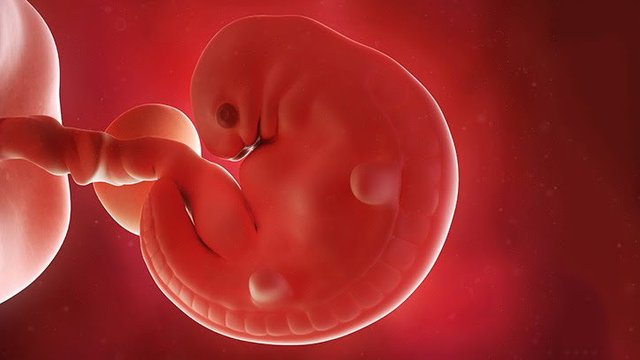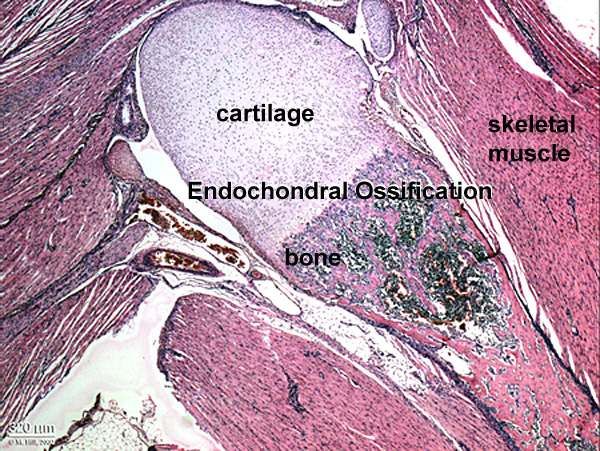THE SCIENCE OF BABY DEVELOPMENT.... Fetal Development: Baby’s Bones and Skeletal System
A baby’s bones start developing soon after conception and don’t finish growing until she’s an adult.
Learn how a baby’s skeleton forms and get tips to ensure they stay strong.

Image source
It might be hard to believe when one is being poked from the inside by a pointy elbow or when a pointy little bottom is pushing on your bladder, but the baby’s bones don’t just grow in fully-developed. They are very much formed by what both individuals (mother and foetus) eat. The skeletal structure of a baby’s whole body starts out as a flexible cartilage that gradually ossifies ( becomes hard bone) as the baby absorbs more calcium from the mother during pregnancy and then from the foods intake (20 years beyond!).
bone formation can be divided into 2 specific forms that occur in anatomically different regions.
But Briefly, lets see a month by month explanation on how a squishy tadpole (foetus) becomes a baby.

Image source
Month 1: The Embryo Develops Three Layers
Shortly after conception, the embryo differentiates into three layers of cells. The mesoderm (middle layer), will develop into the baby’s bones as well as heart muscles, kidneys and sex organs. The inner layer ( the endoderm) becomes the baby's digestive system, liver and lungs. And the ectoderm (outer layer) develops into the nervous system, hair, skin and eyes.
Month 2: in this month, Start off Arms and Legs.
Big changes are happening to the embryo. It’s starting to develop a clavicle and parts of a backbone, for starters, while the neural tube forms the source for parts of the nervous system as well as the spine and skull. By about week 6, the foetus is also sprouting arm buds as well as legs. the only thing that isn’t growing is its tadpole-like tail, that’s shrinking and will eventually disappear leaving only the tailbone at the base of the spine.
.jpeg)
Image source
Month 3: The formation Face, Nose, Fingers and Toes.
During these final weeks of your first trimester, your baby’s bones develop a lot. They start out as little buds and grow into recognizable arms and legs, with bendable joints and well-defined fingers and toes by about week 13. Upper limbs tend to lead the way by a few days, with lower ones following — the same way motor skills develop after your baby is born, from the top of the body down (lifting head, then pushing up, then crawling, then walking).
.jpeg)
Image source
Month 4: Mom’s Supplying Baby Tons of Calcium
Via the placenta, mothers body is now delivering calcium to baby to help her bones harden, strengthen and lengthen. This calcium transfer continues up until birth she needs to absorb about 30 grams of this important mineral from you over the course of nine months to build the 300+ bones that make up baby’s skeleton. So make sure you’re consuming as much calcium of about 1,000 milligrams (or 1 gram) of calcium a day helps your baby’s bones grow and safeguards your own (your body won’t hesitate to deplete its own stores for your baby’s sake, so make sure to replenish them regularly).
Check the ingredients of your prenatal vitamin to see how much calcium it includes, and make sure to chow down on foods rich in this important nutrient for bone development, like milk, soy milk, yogurt, cheese, canned salmon, leafy greens and edamame, along with plenty of vitamin D (salmon, canned tuna, eggs, mushrooms and fortified foods including cereal, milk and orange juice) to help your body absorb it. Also ask your doc whether you should take additional calcium supplements.
Months 5 and 6: Baby’s Moving Her Limbs
These are active months for bone-building. Your baby can now wiggle his limbs — you may begin to feel those first flutters of fetal movement sometime around week 18 (give or take a few weeks). If you get a peek at your baby during your week 20 ultrasound, you’ll now be able to see those bones he’s busy building — they’re finally visible.
Months 7 and 8: Transforming Cartilage to Bone
How are you doing on that calcium consumption? Keep downing those dairy products, because the majority of the calcium your baby gets from you is transferred during the third trimester — about 250 milligrams a day! She’s busy transforming cartilage to bone as well as developing muscle and building up a nice protective layer of fat.
Month 9: Baby’s Bones Remain Soft
At week 36, mother-baby calcium transfer peaks, with you passing along as many as 350 milligrams of the mineral every day for the remainder of your pregnancy. That’s the case even though your baby’s bones are still softer than an adult’s. They have to be, so they can fit through the birth canal around week 40 and allow room for growth once baby is born. Your baby’s skull, in particular, is designed for delivery: it’s made up of several separate bony plates that can shift and compress as your baby’s head makes its way toward the exit.
Your Newborn Baby
As she grows taller and stronger, her bones will too — they are living parts of her body, after all! This includes her skull: It usually takes two to four months for the front “soft spot” (or fontanel) to close and up to 18 months or more for the back fontanel to close. This allows baby's skull to expand and keep pace with her rapidly-growing brain. And even after the soft spots close, there will still be some room along the sutures (the seams between the bones of the skull).
While the bones begin to fuse together by the time she’s about 2 or 3 years old, the process won’t be fully complete until after she’s an adult to allow her brain (and her whole head!) room to grow.
What can you do to help ensure the process goes smoothly? Continue to take your prenatal vitamin for you and your baby while you breastfeed (babies get all the calcium they need from breast milk and formula, though they need vitamin D supplements if they're exclusively breastfed) — but when you switch your toddler to table food, keep the calcium coming well through high school and beyond for lifelong healthy bones.
Source
Copying/Pasting full or partial texts without adding anything original is frowned upon by the community. Repeated copy/paste posts could be considered spam. Spam is discouraged by the community, and may result in action from the cheetah bot.
More information and tips on sharing content.
If you believe this comment is in error, please contact us in #disputes on Discord
Congrats @ericdavidson
Your great article has been selected to feature in this week Air-Curation Round 14.
Expect an upvote from a supporter of this initiative.
Continue using the #Air-Cliniic tag.
Thanks for your support
Congratulations @ericdavidson! You have completed some achievement on Steemit and have been rewarded with new badge(s) :
Click on any badge to view your own Board of Honor on SteemitBoard.
To support your work, I also upvoted your post!
For more information about SteemitBoard, click here
If you no longer want to receive notifications, reply to this comment with the word
STOPVery interesting information. All this process of creation, formation and growth of a baby is like some sort of magic )